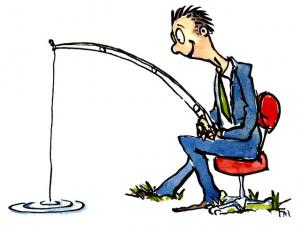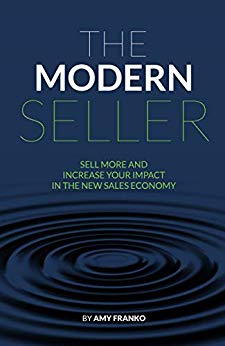The Pitfalls of Being Too Familiar with Key Accounts: How Stagnation Leads to Sales and Profit Declines
In the role of Strategic Account Manager for large accounts, building strong relationships with key accounts is essential. However, there’s a fine line between familiarity and complacency. While maintaining a close connection with large customers is crucial, becoming too comfortable can lead to stagnation, resulting in a decline in sales, profits and missed opportunities. The number of key account salespeople hitting, and exceeding plan has been declining for years. In this article, we explore why being too familiar with key accounts can be detrimental and provide ten telltale signs that indicate you may have crossed that line.
Any relationship if taken for granted will become stale and ultimately vulnerable.
I was coaching a strategic account manager recently and they shared the concern their relationship with the buyer has seemed to sour and go stale and the buyer is not open to discussing new opportunities or sharing challenges. Below are some of the questions I asked that ultimately led me to write this article.
Tell me about when you first were assigned this account. She shared when she first was given this large account is was so exciting! New people to meet at the customer as well as internally on the strategic account growth team. She shared she met with the main buyer and decision maker, and they were very clear about their expectations , needs and how they wanted to be served. The customer shared their vendor scorecard for their business, and they worked together on a plan to improve their scores and increase their share of wallet. Awesome I shared.
How long ago did you become this accounts’ strategic account manager? I was asked to lead this customer in 2019.
What have you seen in growth the last twelve months? Although most of our large accounts had increases, this customer’s sales had no growth.
What are some new challenges your customer has faced in the last 6-12 months? They have not shared any concerns.
How often do you formally meet and discuss your customers’ business, your products and new products and services? We meet formally two times a year, but we probably talk three times a week.
When you talk what do you discuss? Most of the conversation is about orders, when they will be shipping, why an order shipped late and so on. Sometimes we discuss what our competitors are doing.
What have your top two competitors been doing? Both my top two competitors have new account managers in the last 3 months and both their companies are launching new products and services that is taking a lot of the buyer’s time.
Has your company launched any new products or services in the last six to twelve months? Yes, but they are not moving as fast as we predicted and that soured the buyer’s trust.
How many key relationships do you have in this account? That’s hard to say…the buyer and the procurement manager for sure and our company has several relationships with service, shipping, receiving quality as so on.
Just you, how many relationships have you built over the years in this key account? The buyer and the procurement manager and some people in quality and accounts payable.
How would you rank your depth of relationship with people at this account? Are you an acquaintance, vendor, or seen as a trusted industry advisor? Honestly, a vendor is all the Buyer wants and an acquaintance with others.
Who else are key decision makers in this customer? She listed at least six new names and new roles.
Is there any reason you could not reach out to each of them and ask to interview them to better serve their business? Oh no, my buyer would not like that, everything must run through him.
Has he specifically said he does not want you learning how to better serve this account? No
What could you do to interview these new people and make your buyer happy? I could ask him to help me interview these other leaders in the organization.
Great idea and what could you do to build trust with your buyer as you interview his other team members? Let him know how each conversation went and share what they share with me?
What do you think you could do to better understand your buyer and his needs this year? I could interview him and share what other accounts like him are doing in general terms not to violate our NDAs.
Perfect!
We talked for 30 more minutes and worked on persona-based questions to ask the various business leaders she identified. We agreed it would take her 60 days to interview everyone while also managing the account.60 days ended two weeks ago, and we had a follow up call. She has discovered five new ways to help her key account, shared them with the buyer and the buyer is acting like an internal champion to help her. She is now meeting monthly to discuss the business and not just the status of orders and we are currently working with her buyer to develop a key account growth plan.
What happened?
In my opinion the salesperson had grown too familiar with the customer and the relationship was stale and way too shallow.
I can say this because I experienced this in the 1990s when Walmart was my key account. Luckily a new buyer shook me out of my complacency back then.
Are any of your key account relationships grown stale?
Below are some danger signs to consider for your accounts.
The 10 Danger Signs of Stagnation at Large key Accounts
Lack of Inquisitiveness: When you stop asking questions and seeking to understand your customers’ evolving needs, you risk falling behind. Markets change, competitors innovate, and customer preferences evolve. Failing to stay curious about your clients’ challenges and goals can lead to missed opportunities to offer tailored solutions and maintain a competitive edge.
Stale Relationships: A stagnant relationship is a dying relationship. If your interactions with key accounts have become routine and predictable, it’s a sign that you may have become too familiar. Customers crave novelty and value partners who bring fresh ideas and perspectives to the table. Neglecting to inject energy and creativity into your interactions can result in disengagement and, ultimately, lost revenue. Stale relationships lack a key account growth plan and you meetings feel more like going through the motions.
Too Few Relationships : As a strategic account manager you must build your relationship matrix with decision-makers and influencers in your key account. Salespeople who only build one or two relationships are vulnerable to key account managers who build a wide and deep key account relationship matrix. Quick Assessment? How many relationships do your strategic account manager have in each key account? If it’s less than five your relationship is too familiar and vulnerable.
Limited Exploration of New Opportunities: If you find yourself sticking to the same tried-and-tested strategies without exploring new avenues for growth, it’s a red flag. Innovation is key to staying relevant in the marketplace. Whether it’s introducing new products or services, entering untapped markets, or adopting emerging technologies, a reluctance to embrace change indicates complacency.
Overreliance on Past Successes: While past successes can be a source of confidence, relying solely on them can hinder future progress. If you frequently reference past achievements to justify your approach without considering current market dynamics, you may be resting on your laurels. Remember, what worked yesterday may not work tomorrow. Adaptability is essential for sustained success.
Limited Engagement Beyond Transactional Interactions: Healthy relationships with key accounts extend beyond transactional exchanges. If your interactions primarily revolve around closing deals and fulfilling orders, you’re missing out on opportunities to deepen connections. Invest in building rapport, understanding your clients’ broader business objectives, and offering value-added services that demonstrate your commitment to their success.
Failure to Grow Share of Wallet: A strategic account managers role must grow your unfair share of the customers wallet in your product or service category. If your share of wallet has not increased in the last 12 months your relationship is too familiar.
Resistance to Feedback or Criticism: Complacency breeds defensiveness. If you find yourself resistant to feedback or dismissive of constructive criticism from clients, it’s a sign that you may have become too comfortable in your position. Embrace feedback as an opportunity for growth and improvement. Actively seek input from key accounts to identify areas where you can enhance your offerings and better meet their needs.
Decline in Customer Satisfaction or Retention: Ultimately, the litmus test for whether you’ve become too familiar with key accounts lies in their satisfaction and loyalty. Monitor indicators such as customer satisfaction scores, retention rates, and feedback to gauge the health of your relationships. A decline in these metrics suggests that your approach may be falling short and warrants a reassessment of your strategies.
Decline in Net Profit by Customer: As key account managers your role is to grow your share of wallet and uncover challenges and problems your key accounts have and help them solve them. You must challenge how you serve the account and strive to be more effective and efficient. When done consistently and correctly your key account net profit by customer will increase. If your net profit by customer is declining you have grown too familiar with the account and you risk your terms of trade are adding too much to the cost of sale and your customer is not experiencing the value, you expected for the investment.
While fostering strong relationships with key accounts is essential for business success, it’s imperative to guard against complacency. Being too familiar with large customers can lead to stagnation, resulting in a decline in sales and lost revenue. By remaining vigilant for signs of complacency and continuously striving to innovate and add value, you can ensure that your relationships with key accounts remain dynamic, fruitful, and mutually beneficial in the long run.
Have your key account managers grown too familiar with their accounts?
Do your Strategic Account Managers have the consultative sales skills to uncover unresolved key account problems?
Do your key account managers have a relationship matrix or just one or two relationships?
Let’s schedule a call and discuss how we can help your key account managers drive explosive growth at strategic accounts.











